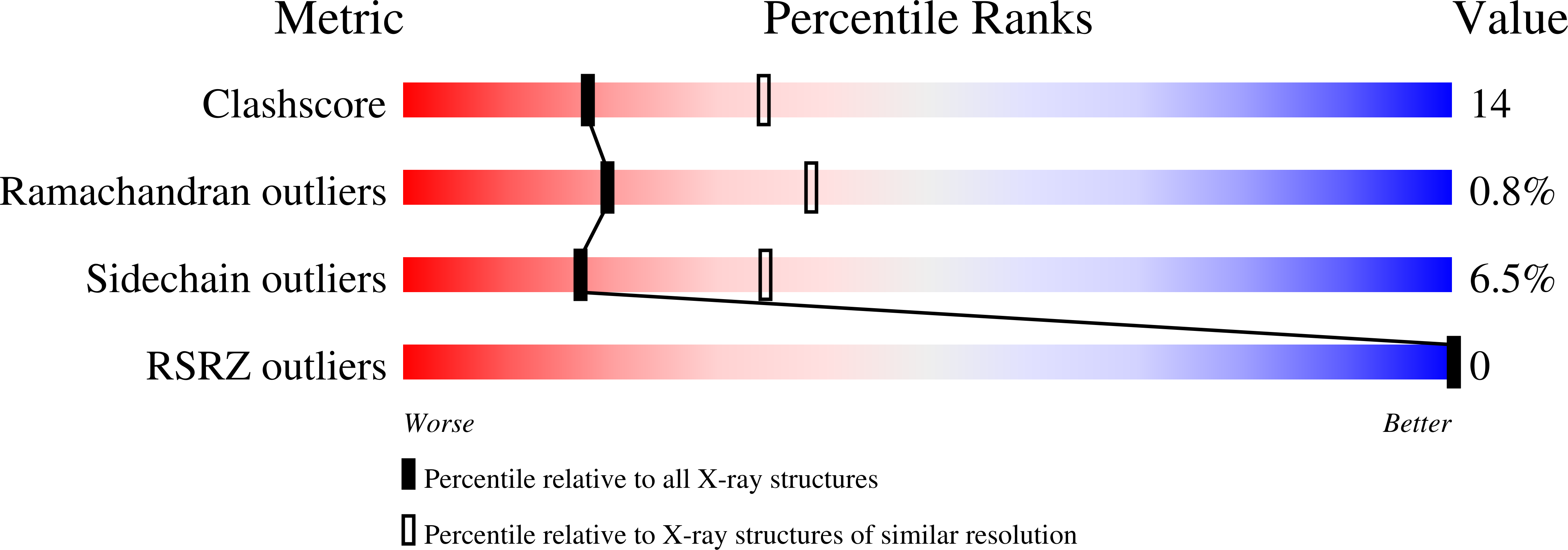Use of strain in a stereospecific catalytic mechanism: crystal structures of Escherichia coli thymidylate synthase bound to FdUMP and methylenetetrahydrofolate.
Hyatt, D.C., Maley, F., Montfort, W.R.(1997) Biochemistry 36: 4585-4594
- PubMed: 9109668
- DOI: https://doi.org/10.1021/bi962936j
- Primary Citation of Related Structures:
1TLS, 1TSN - PubMed Abstract:
Two crystal structures for E. coli thymidylate synthase (TS) bound to the mechanism-based inhibitor 5-fluoro-dUMP (FdUMP) and methylenetetrahydrofolate (CH2THF) have been determined to 2.6 and 2.2 A nominal resolutions, with crystallographic R factors of 0.180 and 0.178, respectively. The inhibitor and cofactor are well ordered in both structures and display covalent links to each other and to Cys 146 in the TS active site. The structures are in general agreement with a previous report for this complex (D. A. Matthews et al. (1990) J. Mol. Biol. 214, 937-948), but differ in two key respects: (i) the methylene bridge linking FdUMP and CH2THF is rotated about 60 degrees to a different position and (ii) the electron density for C6 of FdUMP, which is covalently linked to Cys 146, is more diffuse than for the other atoms in the pyrimidine ring. The ligand arrangement observed in the previous structure led the authors to propose that a large conformational change in ligand geometry must occur in order to facilitate catalysis and yield the correct chirality in the methyl of product dTMP. The new structures suggest a different mechanism for product formation that does not require ligands to greatly alter their conformations during catalysis and which makes use of instability in the nucleotide-Cys 146 thiol adduct to avoid a deep free energy well and assist in proton abstraction from dUMP. All intermediates in the proposed mechanism were modeled and energy minimized in the TS active site, and all can be accommodated in the present structures. The role of ligand-induced conformational change in the TS mechanism and the possibility of Tyr 94 acting as a base during catalysis are also discussed.
Organizational Affiliation:
Department of Biochemistry, University of Arizona, Tucson 85721, USA.

















